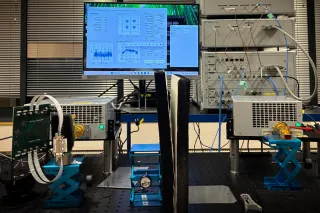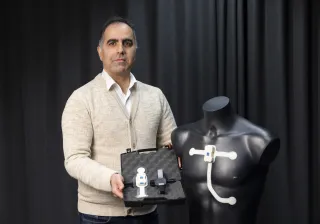VTT Technical Research Centre of Finland studied the energy consumption of indoor swimming pools and practice indoor ice rinks, and use of solar power in them. It is possible to cover 30% per cent of the energy need of such sites with solar power. However, the storage of solar energy poses a big challenge for increasing the use of solar power.
Approximately 40% of the EU's overall energy consumption is taken up by buildings. The currently valid EU directive requires all new buildings to be nearly zero-energy (NZEB) by the end of 2020. The regulation is aimed at saving energy to mitigate climate change. Even new sports halls, major consumers of energy, need to be more energy efficient in the future.
VTT conducted a case study by means of computer simulation on for which purposes the indoor swimming pools and indoor ice rinks use their energy and in what ways their energy consumption could be reduced. Currently, electricity plays a significant role in the operations of both types of halls. Some of this need of energy could be covered by collecting solar power in spring, summer and autumn.
It is profitable to use solar power for the special needs of ice rinks in summer, when the energy consumption of refrigerating machines is at its highest. In swimming halls, the situation is totally opposite, because the premises need most heating in the winter time, when the availability of solar energy is at its lowest.
When not stored, solar power can cover 30% of the energy needs of both types of sports halls at reasonable cost. At the highest, solar power could replace 35% of the energy used in indoor swimming pools and 50% of the power used in indoor ice rinks. There are several factors affecting the figures, such as the energy-technical solutions used in the halls, location, the orientation of the building, the weather conditions, time of year, and tree stands or other buildings shadowing the building.
Storage is still difficult and expensive
The challenge is that it should be possible to store large amounts of solar-produced power at low cost to make solar energy a flexible and year-round alternative. As regards indoor swimming pools and indoor ice rinks, it is difficult to achieve nearly zero-energy level with the currently available building and equipment technical solutions without the costs rising uncontrollably. Storage of electricity is particularly challenging and expensive for the duration of winter months. Furthermore, the batteries are heavy and take up a lot of space. Compared to, for example, liquid fuels, the batteries take up 10-100 times more space. The service life of batteries is currently 10 to 15 years.
The results of the research serve as a tool for planning new sports halls, when the designers want to use renewable energy. The results will be made available to designers and the construction industry.
In the future, the method developed by VTT enables making an individual plan for each sports hall, and helps in planning, for example, a right number of solar panels and panel orientation for each hall.
The project led by VTT was implemented in 2015-2017, and it received funding from the Ministry of Education and Culture, the Ministry of the Environment and VTT.
Publication: Towards zero energy sports halls (in Finnish, with an English abstract)
What is a nearly zero energy building?
Definition by the Ministry of the Environment: The term nearly zero energy building refers to buildings with a very high energy efficiency. Their very low need of energy is largely covered by renewable sources of energy.



